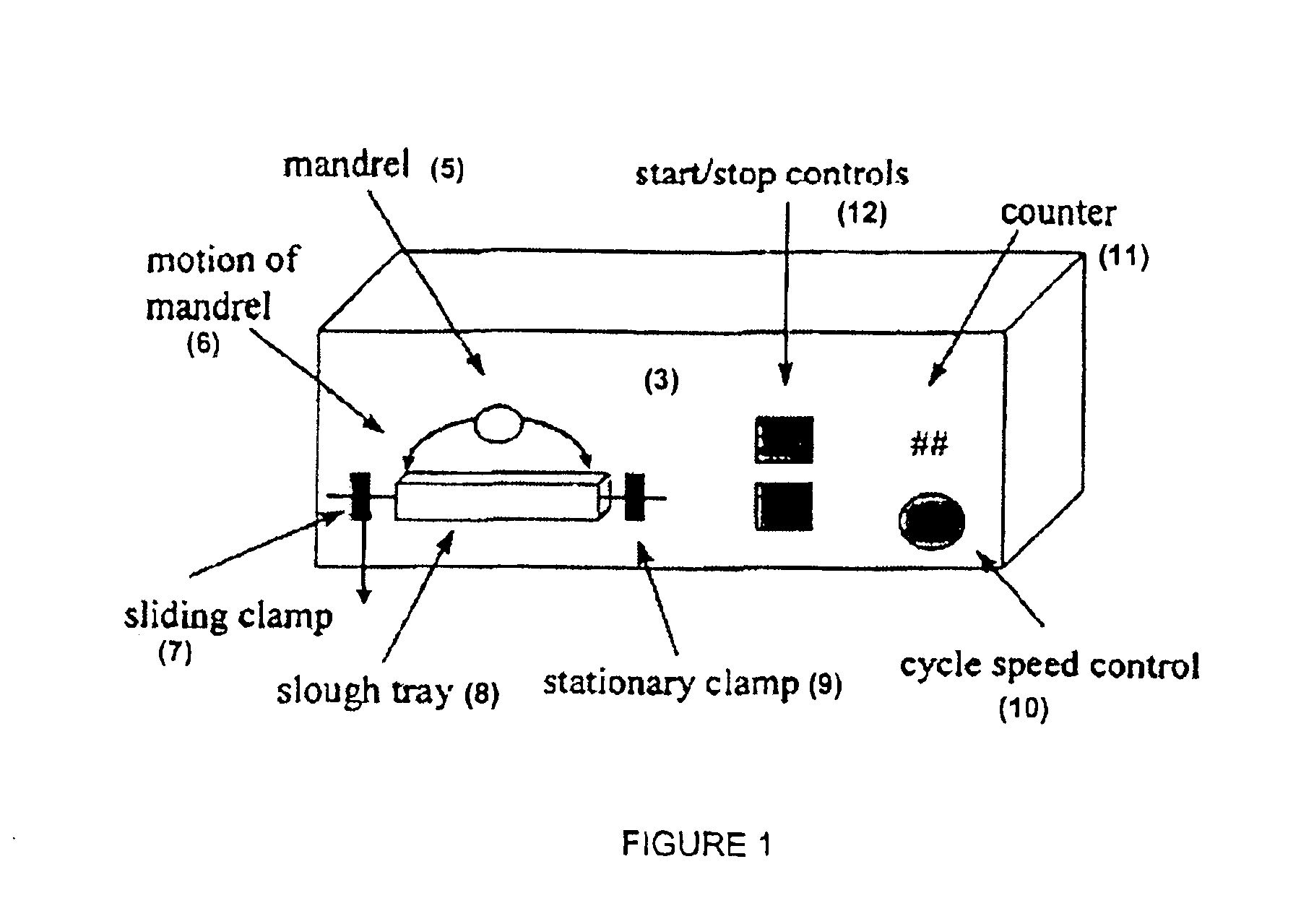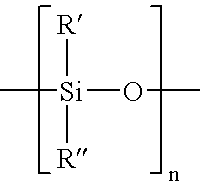Hydrophobically modified cationic acrylate copolymer/polysiloxane blends and use in tissue
a technology of cationic acrylate and polysiloxane, which is applied in the field of tissue product manufacturing, can solve the problems of increasing the level of lint and slough in the tissue product, reducing the stiffness of the sheet, and reducing the tensile strength, so as to reduce the level of lint and slough in the tissue sheet, the effect of reducing the level of polysiloxane and less prone to z-
- Summary
- Abstract
- Description
- Claims
- Application Information
AI Technical Summary
Benefits of technology
Problems solved by technology
Method used
Image
Examples
examples
[0092]A three ply tissue sheet having a finished basis weight of 22.7 pounds per 2880 square feet and a furnish consisting of 65 percent hardwood and 35 percent softwood fibers, was printed on both sides with a modified polysiloxane aqueous emulsion (FTS-226 manufactured by Witco Corporation, located at Greenwich, Conn.) via a simultaneous rotogravure printing process. The modified polysiloxane aqueous emulsion contained about 20 weight percent of an amino-modified polysiloxane, about 20 weight percent of a polyether-modified polysiloxane, about 57 weight percent water, about 2 weight percent emulsifiers, about 0.75 weight percent of a biocide package and a small amount of a buffering agent to adjust the pH of the final emulsion to within the range of about 6.5 to about 7.5. The ratio of the percent amino-modified polysiloxane to the percent polyether-modified polysiloxane was 50 / 50. The gravure rolls were electronically engraved, chrome over copper rolls supplied by Southern Graphi...
examples 1-5
[0093]A single-ply, three-layered uncreped throughdried bath tissue sheet was made generally in accordance with the following procedure using eucalyptus fibers for the outer layers and softwood fibers for the inner layer. Prior to pulping, a quaternary ammonium oleylimidazoline softening agent (Prosoft TQ-1003 from Hercules, Inc.) was added at a dosage of 4.1 kg / Mton of active chemical per metric ton of fiber to the eucalyptus furnish. After allowing 20 minutes of mixing time, the furnish was dewatered using a belt press to approximately 32% consistency. The filtrate from the dewatering process was either sewered or used as pulper make-up water for subsequent fiber batches but not sent forward in the stock preparation or tissue making process. The thickened pulp fiber containing the debonder was subsequently redispersed in water and used as the outer layer furnishes in the tissue making process. The softwood fibers were pulped for 30 minutes at 4 percent consistency and diluted to a...
example 1
[0100]Example 1 is a control example wherein the cationic synthetic co-polymers of the present invention were not utilized. The aqueous polysiloxane was a commercially available polysiloxane emulsion, under the trade designation of 1967E from Kelmar, Inc., containing 25% of a hydrophilically-modified amino-functional polydiorganosiloxane amino-functional polydimethlysiloxane, 8.3% surfactant, 0.25% antifoaming agent, 0.2% acetic acid, 0.1% aloe, 0.1% Vitamin E, 0.05% preservative, and the balance being water.
PUM
| Property | Measurement | Unit |
|---|---|---|
| Temperature | aaaaa | aaaaa |
| Fraction | aaaaa | aaaaa |
| Fraction | aaaaa | aaaaa |
Abstract
Description
Claims
Application Information
 Login to View More
Login to View More - R&D
- Intellectual Property
- Life Sciences
- Materials
- Tech Scout
- Unparalleled Data Quality
- Higher Quality Content
- 60% Fewer Hallucinations
Browse by: Latest US Patents, China's latest patents, Technical Efficacy Thesaurus, Application Domain, Technology Topic, Popular Technical Reports.
© 2025 PatSnap. All rights reserved.Legal|Privacy policy|Modern Slavery Act Transparency Statement|Sitemap|About US| Contact US: help@patsnap.com



